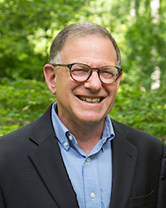By: Bobby Thalhimer, Senior Consultant at The Monument Group
How we led the Virginia Funders Network to build a 100-member statewide network in 9 months, exceeding the member target by 100% and exceeding the revenue target by 30%
At the start, we faced many hurdles. Two prior efforts to build statewide philanthropic networks in Virginia failed in their infancy. Virginia seemed hopelessly divided between its geographically broad red rural counties and its more powerful and condensed blue urban corridor. For the most part, the leaders in these two regions don’t trust one another, and there are few funders that make grants in both. So, how do you go about building a statewide network with these facts?
Thinking scientifically, we divided the task into four phases. First, we individually interviewed each of the 15 founding Advisory Board members, which represent each area of Virginia and include both foundation and corporate funders. From their ideas, we carefully crafted a draft case statement for the Virginia Funders Network, which focused on the areas of shared interest and avoided statements that would pose hurdles. For instance, you can’t lead with collaborative statewide funding opportunities, when almost all funders have regional restrictions.
Step two was to test this draft—our hypothesis—with large and small funders across Virginia, who we felt would be thought leaders if they were to join. We made many revisions to the draft as a result of these interviews. We also developed a funding model with a low bar, recognizing that we had a lot of skepticism to overcome—$1,000 to join and higher giving levels fully optional.
Step three was to get the Advisory Board to finalize the case statement and to make lead gifts before we sought broader membership. The board came through with a preponderance of commitments greater than $1,000, with some at $2,500, $5,000 and $10,000, and with four at $25,000. With this strong leadership in hand, we solicited each of our prior interviewees and, with one exception, they all joined. About 50% joined at levels higher than $1,000. We think this exceptional response occurred because everyone saw some aspect of their interview ideas expressed in the case statement. Then, having already met our membership and revenue targets and with a broad geographical membership in hand, we used referrals from the early adopters to sell the idea broadly.
“A trial makes a customer,” said Bill’s Barbecue, a Richmond-area restaurant chain from the 1960s. By making the entry point affordable at $1,000 for funders, regardless of their asset size, fewer than 10 subsequent solicitations turned us down. At $1,000, it was worth the risk to join a distinguished group of funders from every region, who had put their money on the statewide network idea. Importantly, we solicited funders in rural areas first so that our membership list never looked over-weighted to the urban corridor.
Step four was to provide the expected value. With broad membership in hand, we recruited our CEO, Katy Moore, who had worked with the Washington Regional Area Grantmakers for a decade and who had tested one of the earlier efforts to start a statewide network. We delivered early on promised value with strong Zoom sessions on Virginia General Assembly legislation that affected Virginia philanthropy. We were off and running!
Once Katy joined, networking groups for health funders, community foundations, affordable housing, social justice, and others began their work. A bi-monthly newsletter keeps the full membership informed of other non-VFN learning opportunities and important work being done by their fellow members. VFN has also hosted more broadly based learning sessions on the American Rescue Plan Act (ARPA) and produced an ARPA toolkit for funders. Now VFN is planning a multi-part series on expanding broadband in Virginia.
What have we learned? People value relationships and a sense of community. Begin with a focus on their ideas about ways they can work together. Similarly, avoid trying to force collaboration in areas where strong disagreement exists. Try to find common ground on issues that impact all areas of the Commonwealth, such as broadband and affordable housing. Our expectation is that once launched, trust among the members will build, and the network will accomplish great things in Virginia in ways that the founders could not have predicted. To quote The Temptations, “Like a snowball rolling down the side of a snow-covered hill….”



